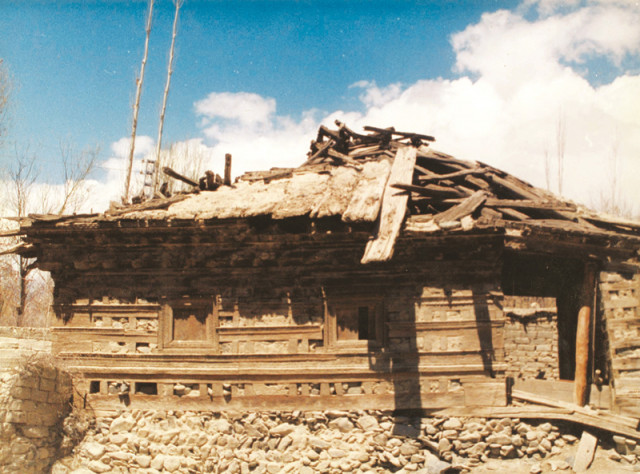Amburiq mosque: Restored spirituality
The Amburiq mosque is a nostalgic reminder of a far more tolerant era

Inhabited principally by the Tibetan Buddhists prior to the 16th century, Baltistan has intrigued visitors for years. Up until the 18th century, explorers and trekkers used the Shigar-Hispar to Nagar and Shigar-Braldu to Yarkand, China, routes for expeditions to the Karakoram mountains. Along with the snow-capped wonders, the Shigar town also hosts a number of architectural and archeological assets such as the Khanqah-e-Mullah, Astana of Syed Mir Yahya, the Khilingrong mosque, Shigar Fort, previously a Buddhist monastery replete with pre-Islamic pictograms, locally known as Bhodhishagran, and the Amburiq mosque.

The Amburiq mosque after it was restored to its former glory in a UNESCO award-winning restoration project undertaken by the Aga Khan Cultural Services and locals. PHOTO COURTESY: AGA KHAN CULTURAL SERVICE PAKISTAN
Built by Amir Kabir Syed Ali Hamdani, the legendary saint who helped spread Islam in the region, the mosque was the first of its kind to be installed in Shigar. On his way from Yarkand in the 14th century (between 1372 -1383), Syed Ali Hamdani passed through the famous Braldu La pass into Shigar with his missionaries. In his effort to strengthen Islam in the region, he commissioned his craftsmen to build the mosque. The structure was erected with the help of locals who used techniques which were a combination of Kashmiri, Tibetan and Persian architectural patterns, symbols and motifs.
The mosque therefore shows traces of the then prominent Buddhist culture of Baltistan leaving its imprint on the budding Islamic way of life. It is a blend of cultures with its typical Kashmiri pitched roof and a Tibetan tower on top. The structure resembles a wooden shell based on cribbage columns and beams, replete with floral and bird woodcarvings on the outside. Inside is a prayer hall with a verandah to the east that serves as a lobby. After years of neglect that took a visible toll on the structure, especially after the earthquake it witnessed 90 years ago causing it to tilt westwards, the mosque was finally restored in 1998. The United Nations Educational, Scientific and Cultural Organization (UNESCO) Asian-Pacific Heritage award-winning project was undertaken by the Aga Khan Cultural Service Pakistan (AKCSP) along with the local community who provided labour and knowledge of mud building techniques to restore the mosque to its original form. The yearlong project strictly followed international standards of conservation and raised awareness among locals on how to handle the mosque’s periodic maintenance work independently.

The director of UNESCO visits the Amburiq mosque in Shigar, Baltistan. PHOTO COURTESY: AGA KHAN CULTURAL SERVICE PAKISTAN
Each year hundreds of devotees and visitors make the pilgrimage to the Amburiq mosque, the only historical religious building still in use in the northern areas of Pakistan, since such traces of Buddhism in Baltistan are a rare historical treasure. While years of plundering and vandalism have destroyed much of the region’s heritage, the Amburiq mosque still stands tall in all its glory — a nostalgic reminder of much more tolerant times.
Ashiq Faraz is freelance journalist, poet and consultant for community development projects.
Published in The Express Tribune, Sunday Magazine, September 28th, 2014.



















COMMENTS
Comments are moderated and generally will be posted if they are on-topic and not abusive.
For more information, please see our Comments FAQ